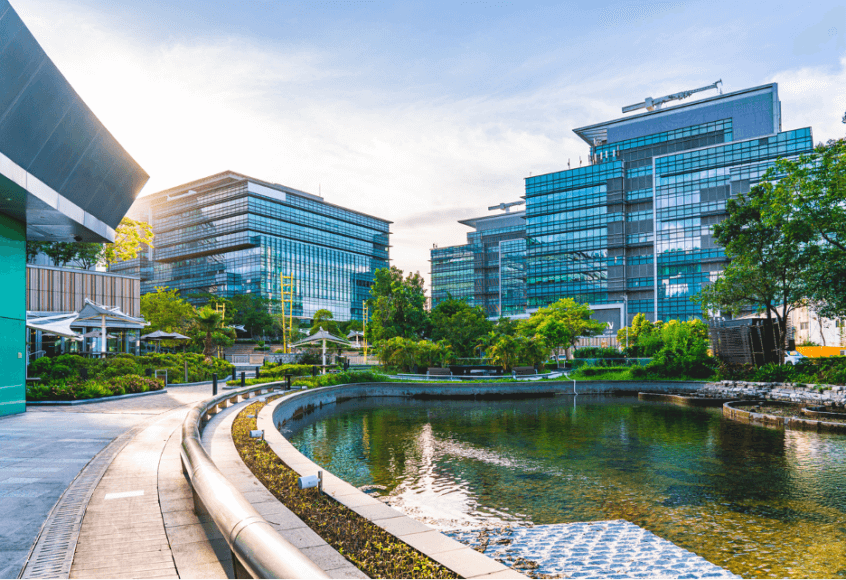Water reclamation promotes environmental sustainability, saves money, and efficiently uses resources, and it has therefore become increasingly popular in green building design. Many commercial buildings are now designed with onsite non-potable water reuse systems (ONWS). These unique water reuse systems allow the collection and storage of water on the property and have become an important consideration for building owners interested in green building practices and LEED certification.
Alternative methods of onsite water collection can include collecting rainwater and stormwater and repurposing groundwater. The water is treated and then used for purposes other than human consumption. This practice is particularly beneficial where water resources are scarce, or the water system is stressed.
Water Reclamation
Water reclamation, also called water recycling, is the process of converting wastewater for reuse. The reclaimed water can then be used for purposes that do not require potable water before returning into the water cycle. The reclaimed water can also be used in industrial settings, environmental settings, and agricultural or landscape irrigation. In urban and residential settings, recycled water can be used for toilet flushing and in HVAC cooling towers.
Treatment of Reclaimed Water
Water reclamation systems use a combination of several processes, including filtration, forward osmosis, reverse osmosis, and advanced oxidation processes, to ensure the reclaimed water is hygienically safe and free of disease-producing organisms. Substances often removed from wastewater include suspended solids, hydrocarbons, volatile organics, and minerals. These treatment processes must attain a certain quality level, depending on how the reclaimed water will be used.
Environmentally Friendly
Water reclamation preserves water to be used for both drinking and non-drinking purposes. The reclaimed water is kept out of the municipal sewer system which saves on annual water and sewer costs for the customer. Nutrient loads that end up in streams, rivers, and other freshwater sources are reduced, which is healthier for local aquatic environments. Reclaimed water used in landscaping and agricultural irrigation prevents the need to use potable water and may reduce the need for artificial fertilization.
Green Building Design and LEED Certification
McKenney’s is dedicated to environmental stewardship. We have worked with many clients on environmental design, building retrofits, controls, operations, and maintenance. We help build systems that are energy efficient, conserve natural resources, and achieve LEED Certification at various levels. Our projects include dewatering systems to repurpose groundwater and assist a client in achieving LEED Certification for utilizing repurposed groundwater in the building’s cooling towers. Contact us today for more information.






